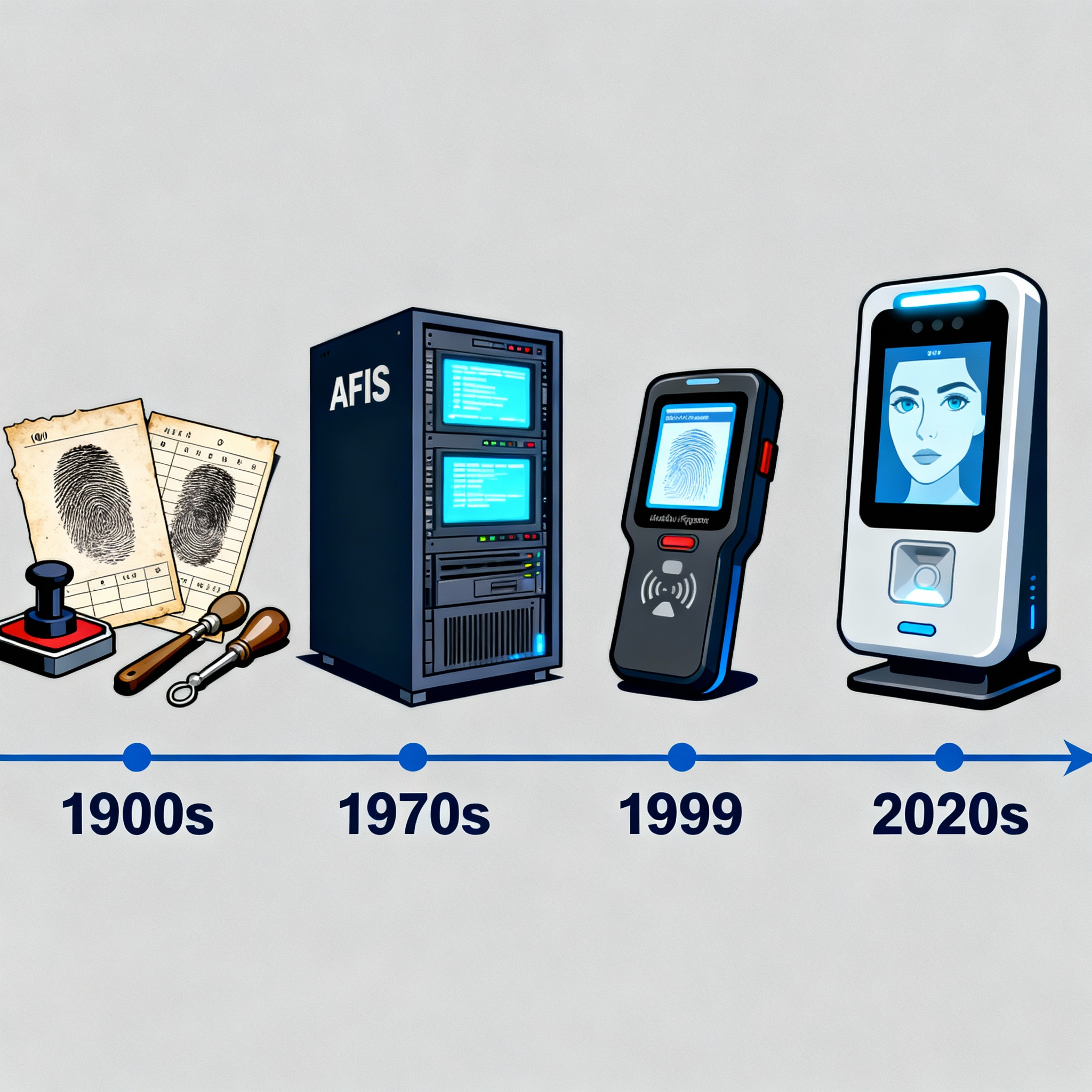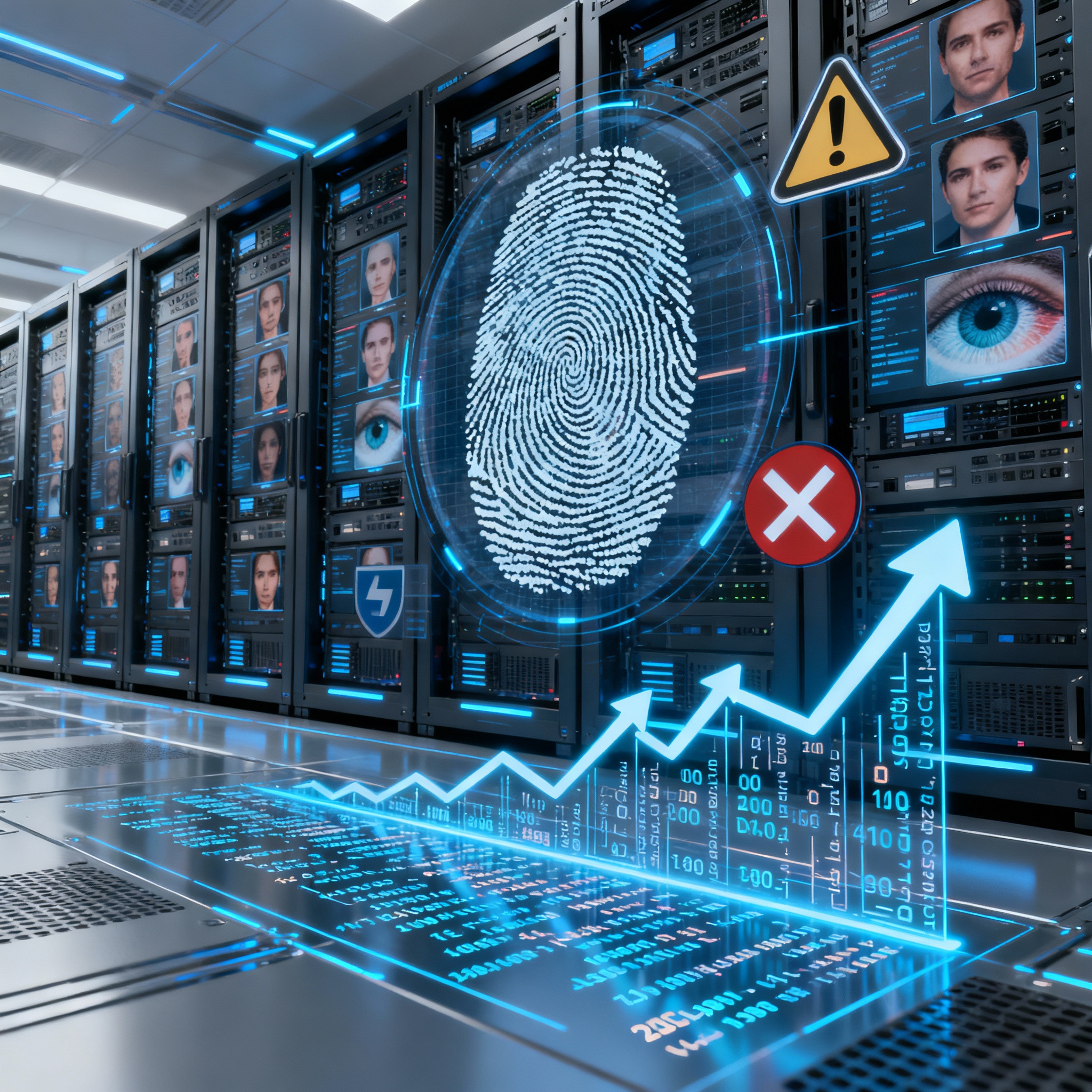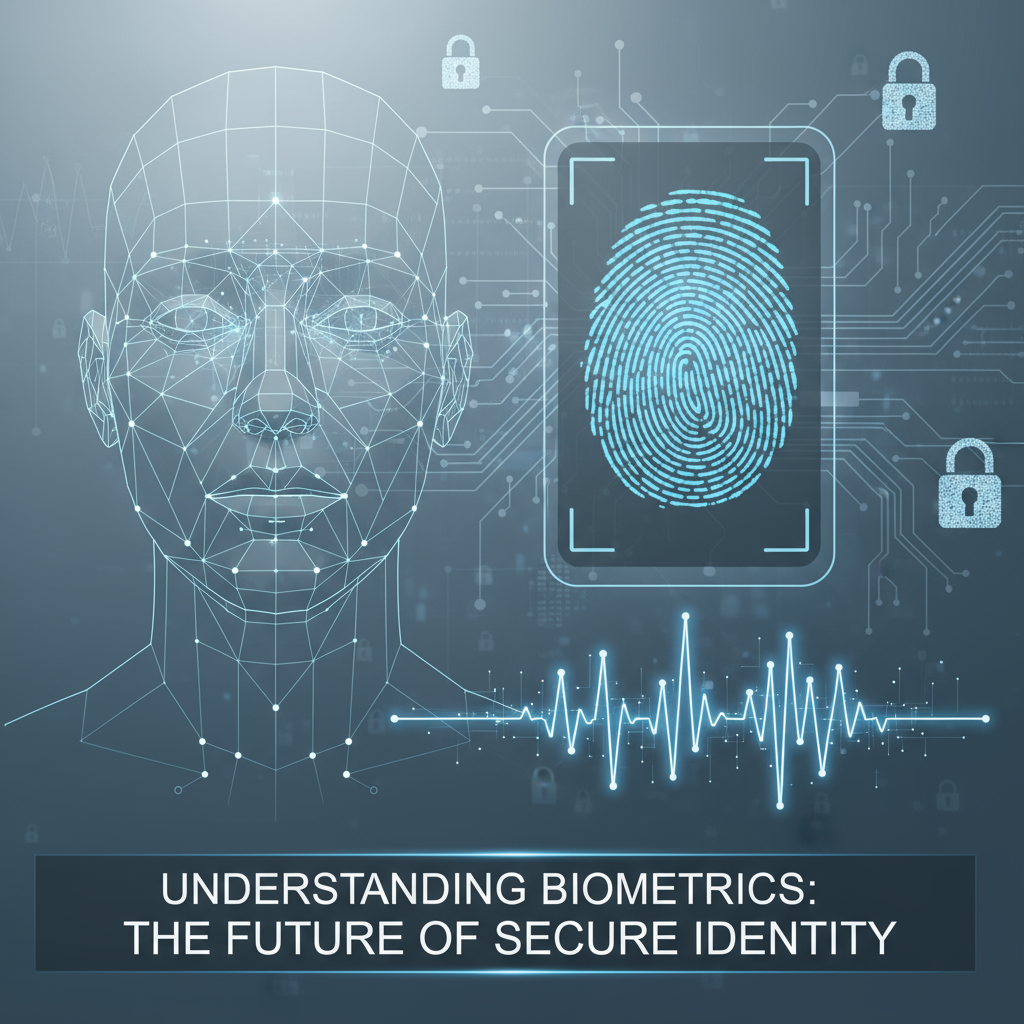Summary
Law enforcement agencies depend on biometrics to identify suspects, verify identities, and solve crimes. Fingerprints, face, and iris recognition have become critical tools. As biometric databases grow to tens of millions of records, accuracy and speed become bigger challenges. Biometric algorithms play a central role in managing these large-scale searches. This blog explains how law enforcement agencies can optimize algorithms, the challenges of massive databases, and how multiple algorithms and biometric fusion can deliver better results.
The use of biometrics in law enforcement dates back more than a century. Early fingerprint classification systems, such as the Henry System, required manual comparison and were slow and often inconclusive.
The arrival of computers in the 1970s made large-scale fingerprint comparison possible. The FBI launched the Automated Fingerprint Identification System (AFIS) in the 1980s, moving from ink-on-card prints to digital records. By 1999, the Integrated Automated Fingerprint Identification System (IAFIS) allowed agencies across the United States to store and compare millions of fingerprint templates.
Today, the modern Automated Biometric Identification System (ABIS) includes fingerprints, facial images, and iris recognition. This multimodal approach improves accuracy, but also creates challenges because of the volume of data stored. Optimizing biometric algorithms is now critical for accuracy, speed, and reliable identification.
Growth of Biometric Databases and the Matching Challenge

Large biometric databases have become the standard in law enforcement. They allow investigators to run one-to-many searches, comparing a suspect’s fingerprint or face against millions of records.
While access to more data increases the chance of finding a match, it also increases the chance of false positives or false negatives. For example, if a unique feature is rare but misclassified, it can lead to thousands of incorrect matches when the database contains millions of records.
Interpol manages an international database of nearly 200,000 fingerprints and thousands of latent prints. National systems such as IAFIS contain millions more. The scale of these systems makes it essential that biometric algorithms are optimized for both speed and accuracy.
Biometric Enrollment: The Foundation of Accuracy
Biometric searches rely on digital templates created during enrollment. Enrollment is the process of capturing high-quality biometric data such as fingerprints, facial images, or iris scans. Poor enrollment quality weakens accuracy during searches.
- Fingerprints: Enrollment captures ridge patterns, minutiae points, and bifurcations. Errors such as reversed hand placement can affect template quality.
- Facial recognition: Algorithms check for correct lighting, pose, and clarity before creating a usable template.
- Iris recognition: Specialized near-infrared sensors capture details that normal visible light cameras cannot.
If raw images are archived, they can be reprocessed later when better biometric algorithms are available. This ensures law enforcement can take advantage of future improvements in search technology.
Biometric Searching and Matching in Law Enforcement
Biometric searching in law enforcement involves comparing a sample, such as a latent fingerprint or surveillance image, to millions of stored templates.
- One-to-many search: A sample is compared across all records in the database. This is used to identify unknown suspects.
- One-to-one authentication: A sample is compared against a single record, often for access control.
In large-scale law enforcement applications, one-to-many searches dominate. Biometric algorithms detect features in the sample and calculate match scores for each potential record. Higher scores suggest greater likelihood of identity.
The Scale Problem: More Data, More Errors

As biometric systems expand, they face challenges:
- False matches: With millions of records, the statistical chance of a false match rises.
- False rejections: Poor-quality samples, such as partial fingerprints, may not match even if the suspect is in the database.
- Speed concerns: Real-time identification is needed in the field, but larger databases increase processing time.
For law enforcement agencies, this means balancing speed and accuracy. Optimizing biometric algorithms is the only way to manage these competing demands.
Biometric Fusion Approaches
Multimodal Biometrics
Using multiple biometric types—such as fingerprint, face, and iris—improves accuracy. A suspect is less likely to be misidentified if two or three modalities are compared together.
However, multimodal systems can increase capture time and system complexity. Many older records are unimodal, meaning they only contain fingerprint data. Adding new modalities takes time and resources.
Multiple Algorithms in a Single Modality
An immediate solution is to use multiple algorithms for the same biometric type. For example:
- A fast algorithm narrows down possible matches.
- A slower, detailed algorithm reviews the top candidates.
- Specialized algorithms handle poor-quality samples.
This tiered approach improves accuracy while maintaining efficiency. It allows agencies to maximize existing fingerprint databases without requiring new modalities.
Requirements for Optimized Biometric Systems
To achieve accurate and scalable results, biometric systems need:
- Open architecture: Enrollment and search tools must integrate algorithms from different vendors.
- Middleware integration: Systems must manage workflows across multiple algorithms.
- Adaptive workflows: Searches should adjust based on sample quality, using specialized algorithms for difficult cases.
This flexibility ensures that no single algorithm becomes a point of weakness.
Case Example: Aware ABIS Solutions
Aware offers ABIS platforms designed for large-scale law enforcement use.
- BioSP™ acts as algorithm-agnostic middleware. It integrates algorithms from different suppliers.
- Astra™ is a scalable matching platform that supports Aware’s Nexa™ algorithms and third-party algorithms.
- The system allows biometric fusion, handling both multimodal and multi-algorithm searches.
Such platforms show how flexible architectures can improve identification accuracy and efficiency.
Benefits of Optimized Biometric Algorithms in Law Enforcement
- Faster Searches
Optimized algorithms reduce processing times, making real-time field identification possible. Officers can identify suspects in seconds. - Reduced False Matches
Using multiple algorithms minimizes errors in large datasets, increasing confidence in results. - Better Handling of Poor Samples
Algorithms designed for low-quality data improve accuracy with partial fingerprints or unclear surveillance images. - Higher Confidence in Results
Fusion of algorithms increases certainty in match and non-match decisions, which strengthens investigations. - Scalability
Optimized systems handle tens of millions of records without slowing down, essential for growing databases. - Stronger Collaboration
Interoperability allows local, federal, and international agencies to share data effectively.
Future Outlook
The future of biometric identification in law enforcement will include:
- Greater use of artificial intelligence to improve feature detection.
- Wider adoption of multi-algorithm fusion for accuracy.
- Expansion of multimodal biometrics as more data types are collected.
- Increased focus on privacy and ethical handling of biometric data.
FAQs
What are biometric algorithms?
They are computer programs that analyze biometric data, such as fingerprints or facial images, to find matches in databases.
Why do law enforcement agencies need optimized biometric algorithms?
Because databases are growing, and optimized algorithms ensure fast and accurate results even with millions of records.
How do multiple algorithms improve accuracy?
Different algorithms have different strengths. Combining them reduces errors and improves match confidence.
What is biometric fusion?
It is the process of combining multiple biometric modalities (fingerprint, face, iris) or multiple algorithms to increase accuracy.
How do poor-quality samples affect biometric searches?
Low-quality samples may reduce accuracy. Specialized algorithms are used to improve matching in these cases.
What is the role of ABIS in law enforcement?
ABIS (Automated Biometric Identification System) allows agencies to store, search, and share biometric records across local, national, and international levels.
Conclusion
Large-scale biometric identification has transformed modern policing. But as databases grow, the risk of false matches and delays also increases. Optimizing biometric algorithms through fusion, multiple vendors, and adaptive workflows ensures law enforcement agencies achieve fast, accurate, and scalable identification. This is critical for solving crimes quickly, improving officer safety, and building public trust.
Debabrata Behera is a passionate blogger who writes about digital trends, personal growth, and practical insights, helping readers stay informed, inspired, and ready to achieve success in life.




